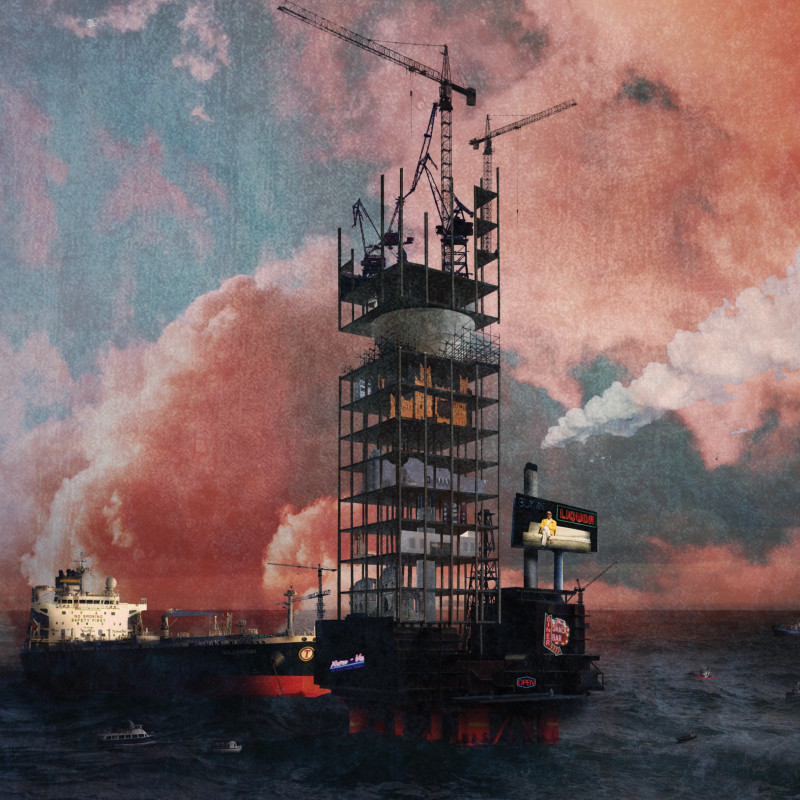5 key facts about this project
This project serves as a sanctuary amid uncertainty, rooted in the idea that architecture can play a critical role in addressing the pressing issues of climate change. The design reflects a commitment to creating a resilient urban habitat that not only withstands environmental pressures but also fosters a sense of belonging among its inhabitants. The tower is envisioned as a vertical community, comprising various functional spaces that cater to essential needs while promoting social interactions.
A significant aspect of the design is its innovative vertical zoning. The lower levels are specifically allocated for food production, utilizing hydroponic systems and aquaculture to facilitate sustainable harvesting of resources from the sea. This approach encourages self-sufficiency and minimizes reliance on external supply chains, making food a pivotal aspect of daily life in the tower. The middle levels are dedicated to social hubs, educational institutions, and recreational areas, emphasizing the importance of communal spaces where skills can be shared and relationships cultivated. At the higher elevations, observation points and renewable energy installations are strategically positioned to harness wind and solar resources, enabling the tower to generate its energy sustainably.
The architectural form of "The Last Resort" integrates cylindrical and geometric elements that resonate with both maritime influences and urban design. This unique fusion reflects the structure's adaptability to a floating environment, akin to traditional oil rigs, while symbolizing a shift away from fossil fuel dependency toward a future focused on resilience and sustainability. The tower not only meets practical needs but also addresses cultural and philosophical reflections on humanity's relationship with the environment as documented in the work of thinkers like Georg Wilhelm Friedrich Hegel.
In terms of materiality, the project suggests a thoughtful selection of materials that balance durability and sustainability. Recycled steel would form the backbone of the structure, providing essential structural support while minimizing the environmental footprint. The use of glass and polycarbonate panels is indicative of a commitment to natural light and thermal performance, essential for enhancing occupant comfort. Additionally, reinforced concrete would serve as the foundational material, ensuring stability amidst ocean currents. Green roof systems further underscore the importance of integrating nature into the urban environment, promoting biodiversity and effective stormwater management.
Unique design approaches in "The Last Resort" highlight eco-technological innovations that redefine urban living. The integration of energy harvesting systems, such as solar panels within the upper levels, is designed to optimize energy collection, fostering an environment of self-reliance. Waste recycling units illustrate a commitment to creating a closed-loop system, where materials are repurposed and reintegrated, reducing waste and minimizing the environmental impact. Moreover, advanced water management solutions, including rainwater harvesting and saline water desalination, reflect a proactive approach to resource management in an ecologically vulnerable setting.
Geographically positioned within the North Sea, this project responds to the realities faced by regions contending with the effects of climate change. The chosen site not only allows for experimental floating architecture but also emphasizes the urgent need for adaptive solutions to the challenges of urban living in a future characterized by rising water levels and increased weather volatility.
Overall, "The Last Resort" stands as an important architectural project that addresses contemporary environmental issues, advocating for a future where sustainable living is possible on the water. By exploring this project further through its architectural plans, sections, and designs, readers can gain deeper insights into the innovative ideas behind this unique architectural solution. The focus on creating interconnected communities and promoting ecological balance offers a compelling vision for urban design in a changing world, inviting ongoing discussions about the role of architecture in shaping our future.


























